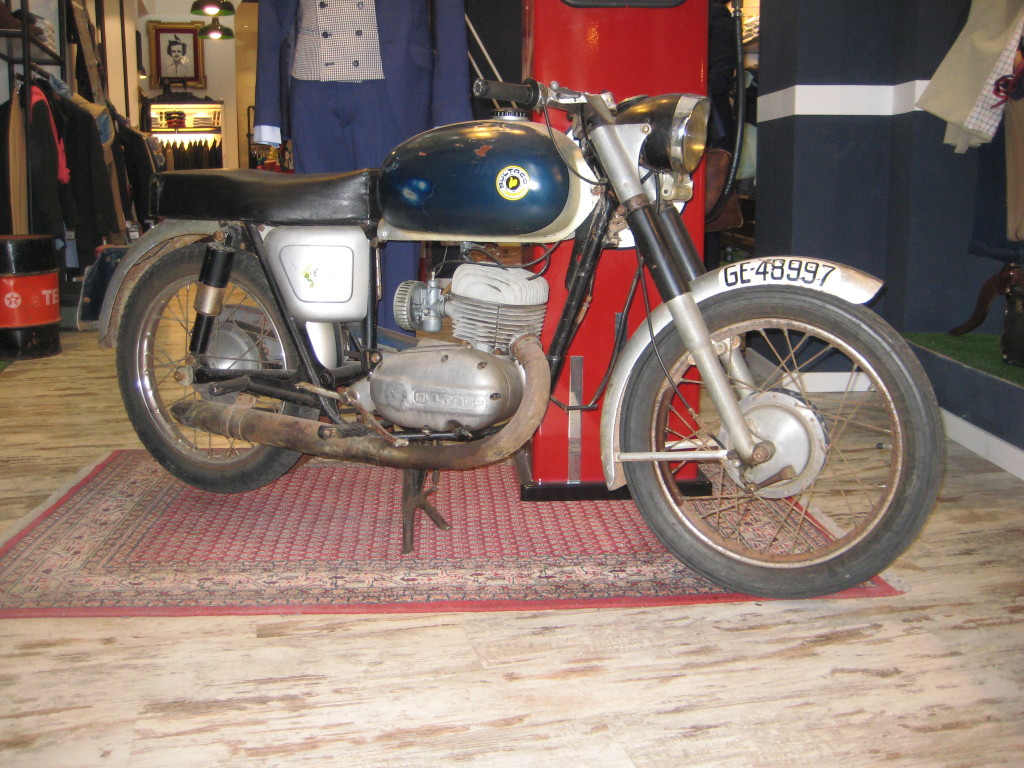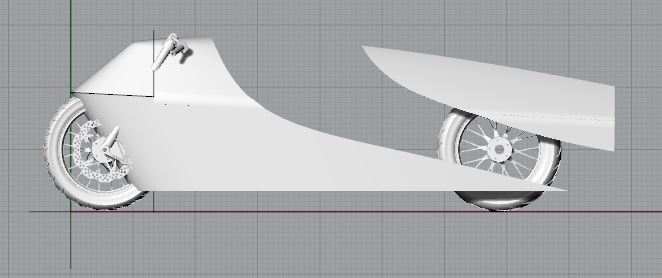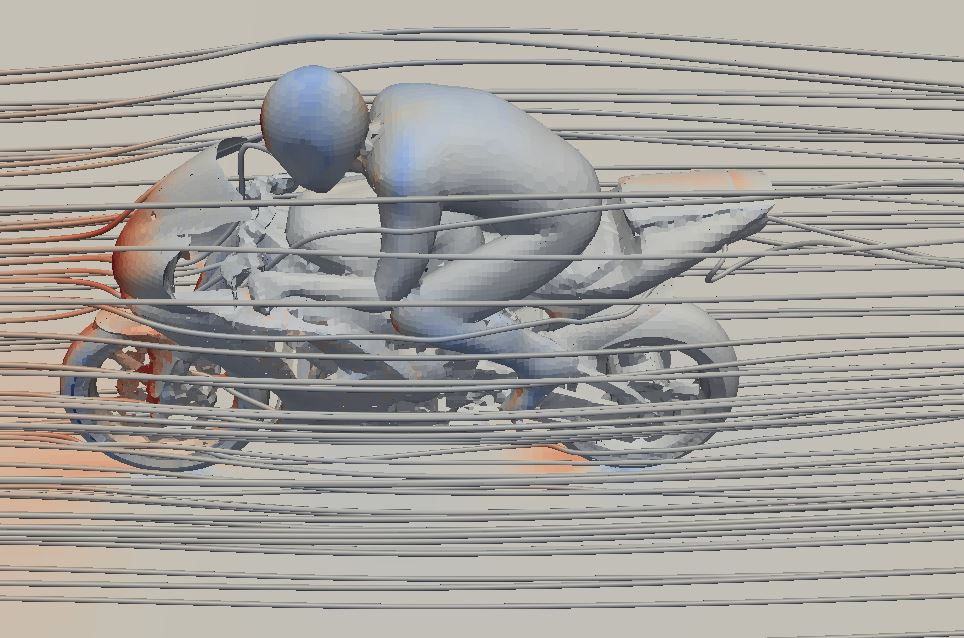


I have a friend in Tacoma who is building a motorcycle with the intent to break a speed record this year in the Utah salt flats. His name is Mike and here is a link to a blog that chronicles his efforts. He even gave me a little shout out for helping with some curve coordinates. Mike built a bike to race last year but weather prevented ever running it on the flats. Mike has been doing a phenomenal job all after work and weekends and I applaud his efforts. I wanted to provide more significant help but the timing of this trip precluded me adding any value. Never-the-less the idea got me interested in learning more about how to use my computer aided design application Rhino (a very popular CAD package from Robert McNeel & Associates headquartered in Seattle). I spent some time leaning how to create airfoil sections curves and surfaces. The example above is the result of some of those experiments. Next I wanted to figure out if I can analyze the aerodynamics of a bike. Aero analysis is performed with CFD (Computational Fluid Dynamics) software. Most of the good CFD software costs $10K or more. I found a fairly good free (open source) application called OpenFOAM and a second application for viewing the results called ParaView. I am continually amazed at the amount of free quality software that is out there. CFD analysis is fairly complex and software to perform it complex as well. Luckily OpenFOAM comes with a bunch of test cases one of which happened to be a motorcycle. Even with the support of having a ready made test case it still took me 20 to 30 hours to get to the point of being able to produce the image above. The colors represent air pressure, red being high pressure and blue being low pressure. The squiggly lines represent how air would flow. My next experiment will be to take my draft motorcycle above (second picture), add a driver, and perform the same aero analysis you see in picture three. I hope at some point I can take the real shapes of Mike’s motorcycle and run it through this software to see the results. Since I have only scratched the surface of leaning how to use the software, I have a bit of work ahead of me. Luckily there are lots of good tutorials out there and there is a complete course from MIT on aerodynamics that I have been viewing as well. My major is Electrical Engineering (not aero) so all of this is new to me. Now you know what occupies my time for 9:00 till midnight. (Loren – this is why a lug a computer around). -Dave